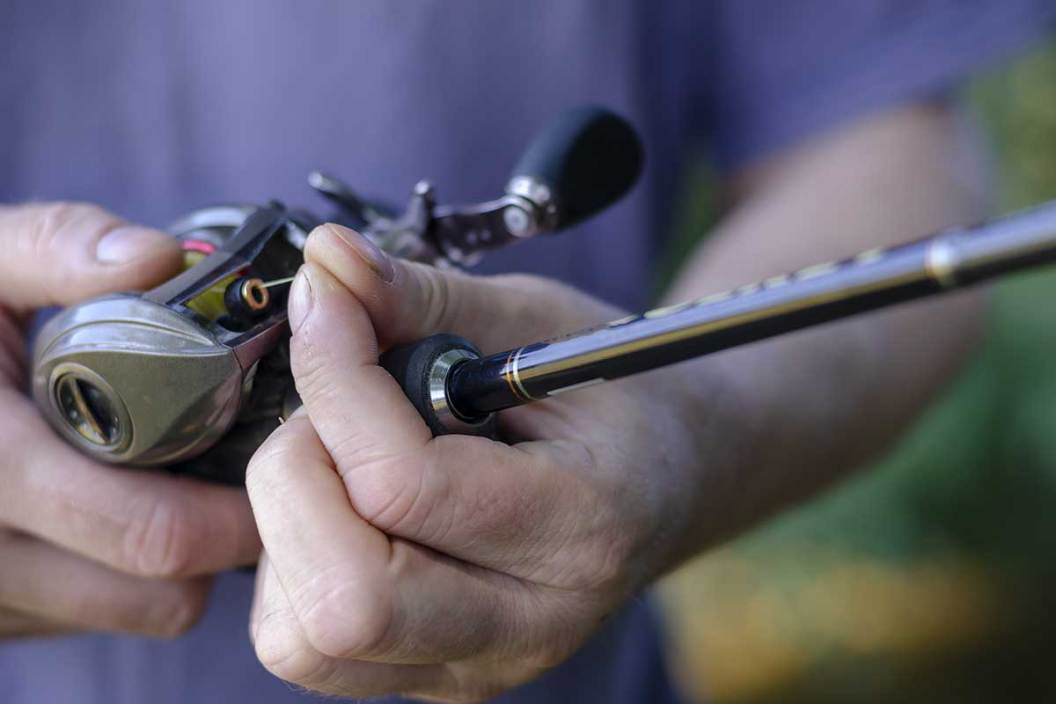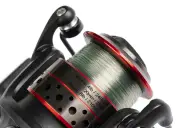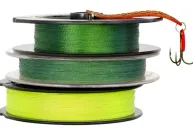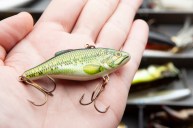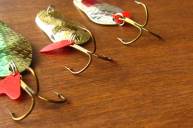All anglers need to embark on a search to find out what exactly is the best fishing line for bass.
Want to start an argument with other bass fishermen? Then chime in when it's time to talk about the best line for bass fishing.
All the pro anglers that we know, love, and follow understand the importance of fishing line type and strength, but amateurs may not always realize how much impact your choice can have.
In other words, pros use the gear they use for a reason: they believe it improves their chances at hooking up and landing fish.
Plus, there are many different fishing line manufacturers, making it even more difficult to find the best fishing line for bass. While there is some overlap in brands to be sure, each of us as individual fishermen have our own ideas based on the way we fish and the locations we frequent.
Like the pros, everyday anglers can use trial and error to learn what works best for their favorite baitcasting reel or their favorite spinning reel. But buying and trying every brand name and fishing line type, requires time and a lot of money, neither of which is easy to instantly come by.
That being known, we'll look at the simple differences between the three leading types of bass fishing line to help guide you in your choices and prevent some wasted time and resources.
Monofilament Fishing Line
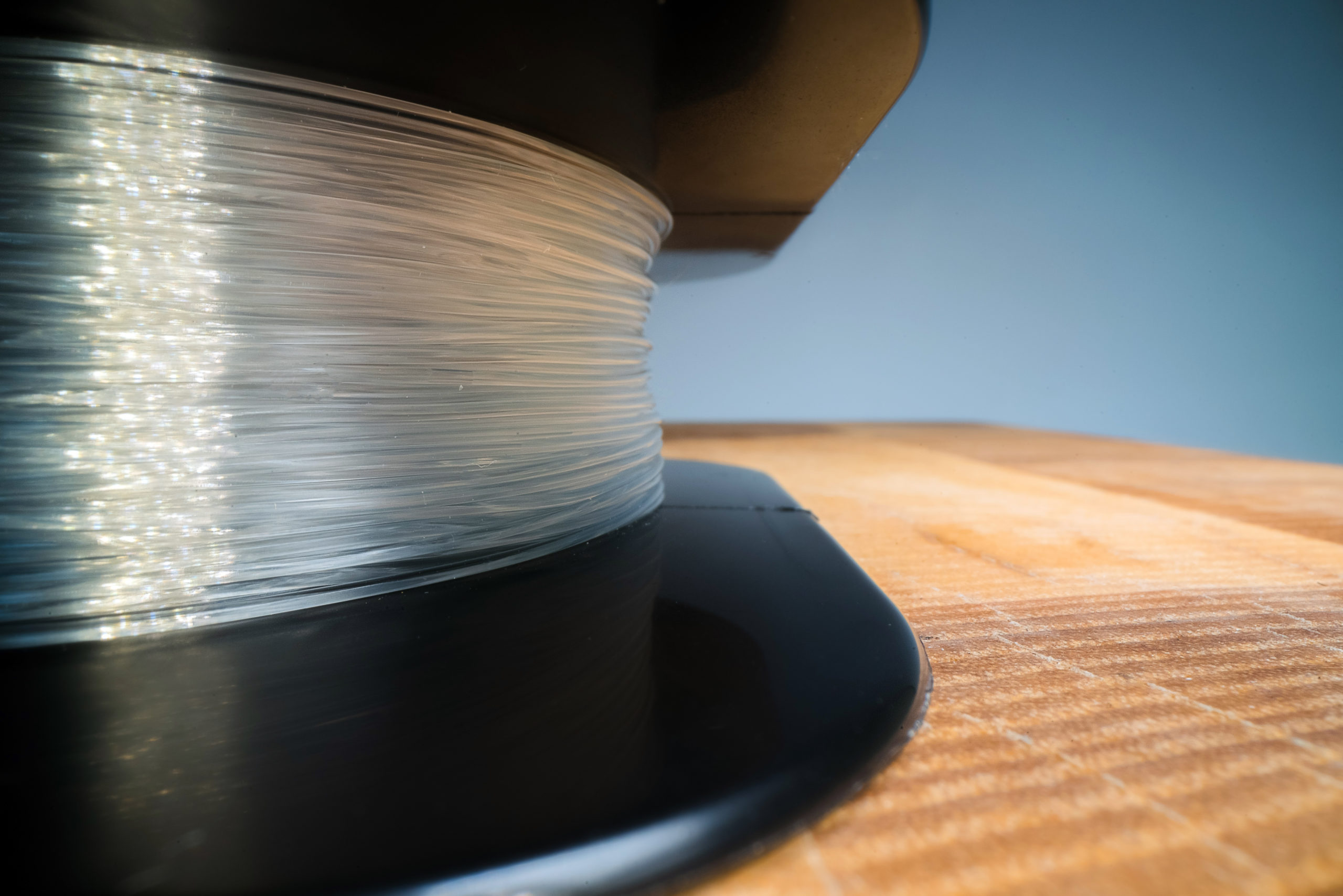
Monofilament, or "mono" line, is the classic choice and what most of us longtime fishermen started out with. It is still used today for many good reasons. Sure, it has the most line memory and a lot of stretch, but modern mono has seen improvements in both of those characteristics.
Monofilament fishing line has low visibility and it comes in nearly every size imaginable to fool even the most wary fish. It is made by using nylon or a blend of nylon and other multi-polymer ingredients to produce different levels of stretch, strength, and abrasion resistance. It's easy to handle and tie knots with.
The downside to mono is that it is a petroleum product and can be broken down by UV light over time, making it brittle and prone to breakage. Monofilament fishing line tends to have a lot of stretch to it when setting the hook, which can be considered both good and bad. The good part is that by stretching under pressure, it eases the amount of load on other equipment like the fishing reel and fishing rod. The bad part is that it stretching weakens the line over time, and too much stretch could prevent deep hook sets and lead to bass breaking off while you're trying to land them.
Monofilament works best for smaller bass species, does well when live bait fishing with panfish, and truly excels as a filler or backing on spools to solve the problem of other lines (such as braid) from sliding on the spool.
Monofilament for Bass Fishing
Some say that mono floats, but the truth is that it sinks very slowly. This is a good reason why it should be used for topwater baits while bass fishing. In fact, monofilament works equally as well for poppers as it does walking baits as well.
The extra amount of stretch that comes with monofilament can help in topwater situations since the angler needs to be patient at the strike, keep the rod tip low, and let the fish do the work.
Mono is also a good choice when using diving and lipless crankbaits with treble hooks. Since it has a high stretch rate, mono has an advantage here, making it tougher for bass to spit the lure during the fight, especially when they leap.
Fluorocarbon Fishing Line
Fluorocarbon fishing line has very low visibility in water, lower stretch than mono, and excellent abrasion resistance. It is more resistant to UV light deterioration, and has a good knot strength when tied correctly. It also sinks, keeping bait and lures low in the water column. The main downside to fluorocarbon line is that it is much more expensive than mono, but prices have improved in recent years.
Fluorocarbon for Bass Fishing
The big advantages of fluorocarbon for bass fishing is that it is almost invisible in the water, and it doesn't stretch as much as monofilament. Although it stretches some, it's more sensitive than mono, and today's versions are able to be cast much easier.
Fluorocarbon sinks rather quickly, which can be used to the fisherman's advantage in some applications like deeper running crankbaits. Its lower line stretch means that it can be good for setting the hook while fishing soft plastics, and pitching or flipping jig and pig combos. For most soft plastic baits, fluorocarbon line seems to be the most popular and obvious choice for bass anglers everywhere.
Motion or moving baits (crankbaits, jerkbaits, swimbaits, spoons, and spinnerbaits) match well with fluorocarbon. Other than the heaviest swimbaits, most of these moving baits are better off being used with fluorocarbon line because of the low visibility. Keeping line hidden from the wary eyes of largemouth and smallmouth bass is what's most important.
Fluorocarbon line is good for deeper water fishing as well since it sinks at a much faster rate than mono. Getting a jig or a deep diving crankbait down into the strike zone faster and more efficiently is better done with fluorocarbon line. For most jig applications, fluorocarbon in the 12- to 17-pound test group is usually the key. Depending on the depths and the water clarity, as well the size of the jig, it's usually better to go with the smaller diameters.
Ultimately, fluorocarbon lines probably require more skill and precision to properly tie knots with, since any mistake at the source of the knot can instantly make the line weaker. Most veteran bass anglers will tell you to take your time when tying fluorocarbon to ensure that your knots are neat and that you don't kink it while tightening.
Braided Fishing Line
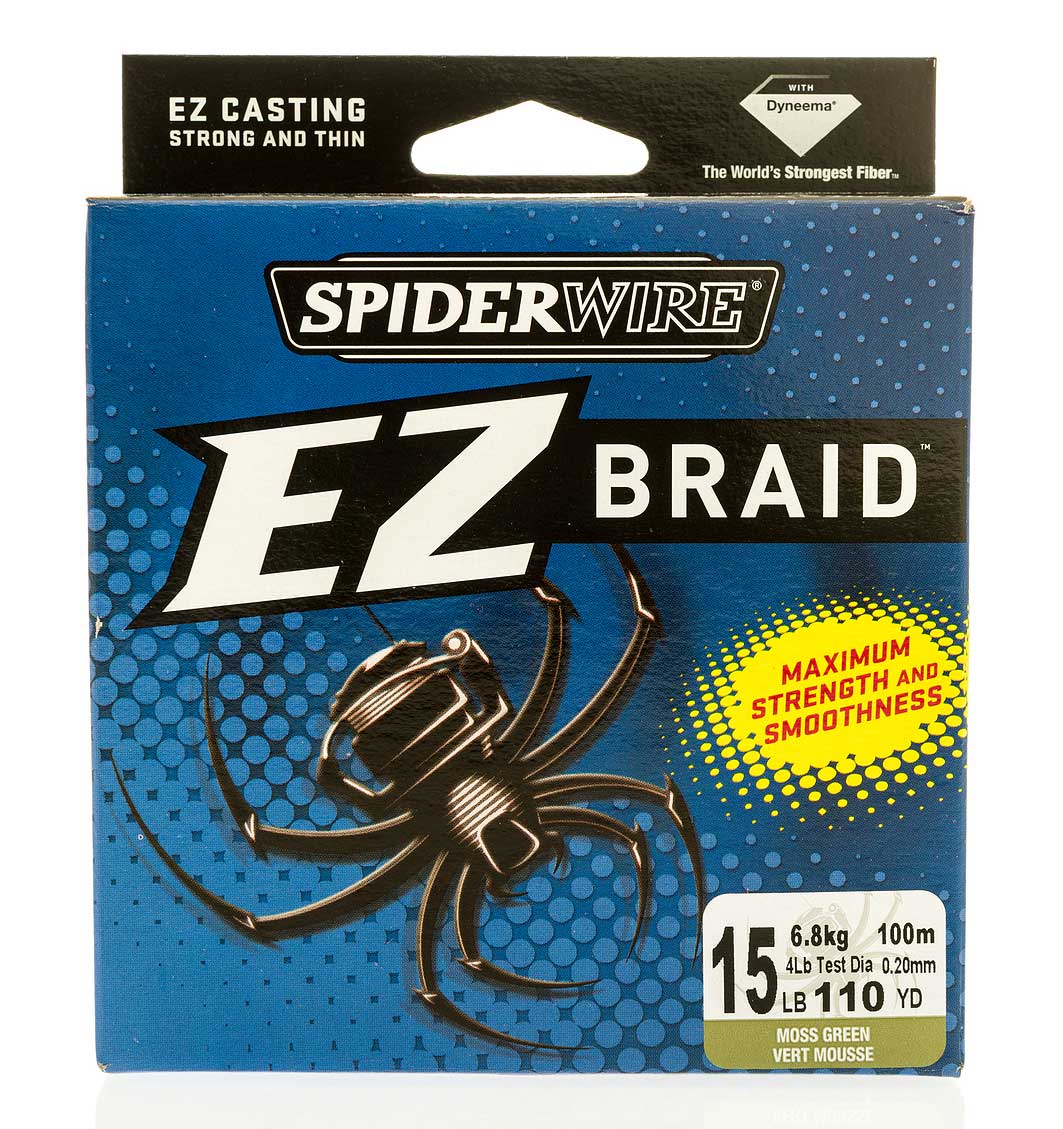
Braided fishing line has been around for a long time, but the most recent and strongest versions have broken on the scene in just the last couple of years. If you're like me, you remember that old Spiderwire ad that said using it was like "hitting a brick with a lawnmower." Make no mistake, the low stretch (virtually no stretch at all), high strength braided lines have some big upsides, but a few downsides as well.
This stuff is built to last and is the strongest pound-for-pound line type out there. It has no memory to speak of and it flows off of every reel like a dream, making for some great long distance casting. Braided line is great for deeper water fishing since strikes can still be detected easily and solid hook sets can be made.
The downside is that it does not disappear in the water column very well, it's only good with certain knots, and if you do get a backlash it's tougher to deal with. Braided lines are also the most expensive of the three on average.
Braided Line for Bass Fishing
As said, the immediate advantages of braid are its incredible strength, especially in smaller diameters. It has no stretch and it's extremely castable. For fishing in heavy cover, nothing gives a bass angler more peace of mind than knowing that his bait is tied to some braided line. High abrasion resistance and super strength adds confidence.
Whether you are throwing a jerkbait for suspended fish or dropshotting 50 feet deep in a clear reservoir, braided line will let you know that you have a strike. No-stretch braided line gives you not only the leverage to haul big bass out of cover, but the overall strength to do it after a solid hook set.
If you are flipping into a heavy weed bed with the included stumps, hydrilla, or thick water lilies, heavy braid is the key to hooking up and dragging out the big bass that live there.
Braided line is a good option for buzzbaits or for slow rolling spinnerbaits just below the surface.
Many weekend and pro bass anglers alike tie a fluorocarbon leader to the end of their braid to get the best of both worlds: a line close to your lure that is invisible followed by the strength and resiliency of the braided line.
For those that don't care to tie two lines together, you can always use a blue or light blue fabric marker to color match the first two feet of the braid to the watery surroundings. Try cutting a slot into the tip of the marker with a razor knife to make it easier.
The Best Bass Fishing Line
Very few manufactured lines are created specifically for any one fish species. They come in a range of strengths (referred to as pound test), lengths, and even colors, allowing you to choose the combination that best suits your brand of fishing.
The different types of fishing line each have their strengths and weaknesses, just like all of our other fishing gear. The bottom line is that each one is useful depending on the circumstances.
At the end of the day, the best type of bass fishing line is based on a variety of factors such as your technique, experience, surroundings, and definitely your personal preference.
When you went into a tackle shop 30 years ago, and you might have only seen nylon monofilament line on the rack. Walk into the local fishing or outdoor store today, and your head will swim with the amount of fishing line available.
Concluding Thoughts
There's no right or wrong answer for the question of what is the best line for bass fishing, only that some lines work better under some specific circumstance than others. Some lines are more easily recognizable in the water than others, but that is easily remedied. Some lines backlash terribly and some lines aren't very abrasion resistant.
Honestly, some lines are better suited for colder weather fishing than their counterparts.
When you consider that some of the most famous anglers that we know started out only using monofilament to begin their illustrious careers, it becomes even more obvious that we would use cat-gut if we had to.. but we don't.
Whether you are fishing in clear water or heavy cover, stained water or muddy conditions, you will still have to navigate line size with the type of fishing that you're doing. Small diameter and tensile strength aren't going to matter if the knots that you're tying aren't the correct ones or if you try to throw a big spoon into the middle of a weed bed.
You won't be unsuccessful if you choose the wrong line any more than you will be unsuccessful choosing the wrong lure. With this info, you're at least more educated.
Looking for a little more or even hot lunch for your hunting blind? Follow my webpage, or on Facebook and YouTube.
NEXT: QUIZ: HOW MANY OF THESE 55 BASS FISHING EXPERIENCES HAVE YOU HAD?
